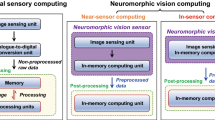Abstract
The dynamics of a physical plant may be difficult to express as concise mathematical equations. In practice there exist uncertainties that cannot be modeled with the system equations. Hence, robustness against system uncertainties is essential in a control system design. In this article, multilayered neural networks (MNNs) are used to compensate for model uncertainties of a dynamical system. Neural network models are used along with a classical linear servo controller derived from the linear state space equations. These models are trained so that system uncertainties are compensated. The design of a servo system indicates the enhanced performance of the neural-network-based servo controller as compared to the classical servo controller.
Similar content being viewed by others
References
B. D. O. Anderson and J. B. Moore,Linear Optimal Control, Englewood Cliffs, NJ: Prentice-Hall, 1971.
C. W. Anderson, “Learning to control an inverted pendulum using neural networks,”IEEE Control Syst., vol. 9, no. 3, pp. 31–37, April 1989.
A. G. Barto, R. S. Sutton, and C. W. Anderson, “Neuronlike adaptive elements that can solve difficult learning control problems,”IEEE Trans. Syst., Man Cybernet., vol. SMC-13, no. 5, pp. 834–846, September/October 1983.
B. Widrow and F. W. Smith, “Pattern-recognizing control systems,”Computer and Information Sciences Symp., Washington, DC, 1963.
D. Psaltis, A. Sideris, and A. A. Yamamura, “A multilayered neural network controller,”IEEE Control Syst. Mag., vol. 8, no. 2, pp. 17–21, April 1988.
A. Guez and J. W. Selinsky, “A trainable neuromorphic controller,”J. Robot. Syst., vol. 5, no. 4, pp. 363–388, April 1988.
W. Li and J. E. Slotine, “Neural network of unknown linear systems,”Am. Control Conf., vol. 2, pp. 1136–1141, 1989.
K. S. Narendra and K. Parthasarathy, “Identification and control of dynamical systems Using Neural Networks,”IEEE Trans. Neural Networks, vol. 1, no. 1, pp. 4–27, March 1990.
Y. Iiguni, H. Sakai, and H. Tokumaru, “A regulator design method using multi-layered neural networks,”Proc. IJCNN, vol. 3, pp 371–379, June 1990.
R. L. Lippmann, “An introduction to computing with neural nets,”IEEE Acoustics, Speech, Signal Proc. Mag., pp. 4–22, April 1987.
M. Hiratsuka, Y. Iiguni, and H. Tokumaru, “A neural servo controller in the presence of system uncertainties,” Faculty of Engineering, Kyoto University, Japan, 1991.
D. E. Rumelhart, G. E. Hinton, and R. J. Williams, “Learning internal representations by error propagation,”Parallel Distributed Processing, vol. 1, MIT Press: Cambridge, MA, 1986.
C. L. Phillips and H. T. Nagle,Digital Control Systems Analysis and Design, Prentice Hall: Englewood Cliffs, NJ, 1990.
Pro-Matlab User's Guide, The Mathworks Inc., 21 Eliot Street, South Natick, MA 01760, U.S.A.
Author information
Authors and Affiliations
Rights and permissions
About this article
Cite this article
Patil, S., Pang, G.K.H. Servo controller design using neural networks. Appl Intell 3, 131–141 (1993). https://doi.org/10.1007/BF00871893
Received:
Revised:
Issue Date:
DOI: https://doi.org/10.1007/BF00871893




